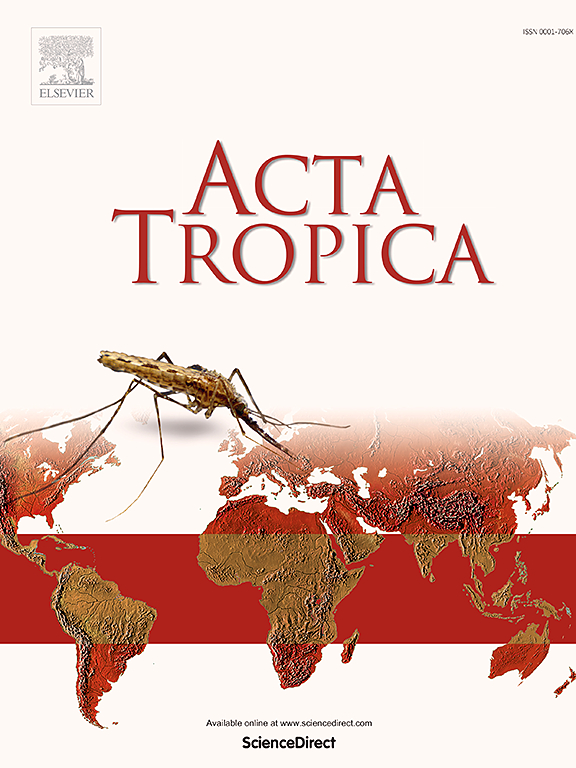Global Assessment of current and future chikungunya virus transmission risk using optimized maxent modeling
IF 2.5
3区 医学
Q2 PARASITOLOGY
引用次数: 0
Abstract
Chikungunya virus (CHIKV) primarily spreads through an urban transmission cycle involving humans and two principal mosquito vectors, Ae. aegypti and Ae. albopictus, especially in densely populated areas, posing significant public health challenges as climate change alters vector habitats. This study applied an optimized Maximum Entropy (MaxEnt) model incorporating CHIKV and primary vector occurrence data (2005–2020) and filtered environmental predictors within a hierarchical framework to project CHIKV transmission risk under current and 96 future scenarios. Under current climate conditions, areas at risk of CHIKV transmission encompassed 15.41 % of the global land surface, predominantly clustered within tropical and subtropical regions. Approximately 6.78 billion people were estimated to reside within these vulnerable zones. And our findings confirmed Ae. aegypti as a dominant factor shaping CHIKV transmission dynamics compared to Ae. albopictus. Future projections showed a general decreasing trend in the global CHIKV risk distribution, with a notable exception in Europe. Specifically in China, current high-risk areas were limited to southern provinces and southeastern coastal regions. Going forward, its high-risk areas would contract while exhibiting a notable northward shift. This study highlights the critical need for adaptive vector control programs targeting both established and emerging CHIKV transmission zones. We advocate for the systematic incorporation of climate change scenarios into long-term CHIKV prevention strategies, particularly in regions projected to become increasingly suitable for virus transmission.

基于优化MaxEnt模型的当前和未来基孔肯雅病毒传播风险全球评估
基孔肯雅病毒(CHIKV)主要通过城市传播周期传播,涉及人类和两种主要蚊媒伊蚊。埃及伊蚊和伊蚊。白纹伊蚊,特别是在人口稠密地区,由于气候变化改变了病媒栖息地,对公共卫生构成重大挑战。本研究采用优化的最大熵(MaxEnt)模型,结合2005-2020年CHIKV和主要媒介发生数据,并在分层框架内过滤环境预测因子,预测当前和96种未来情景下的CHIKV传播风险。在目前的气候条件下,全球15.41%的陆地面积面临CHIKV传播风险,主要集中在热带和亚热带地区。估计约有67.8亿人居住在这些脆弱地区。我们的发现证实了Ae。与伊蚊相比,埃及伊蚊是影响CHIKV传播动态的主要因素。蚊。未来的预测显示,全球千伏病毒风险分布总体呈下降趋势,但欧洲有一个明显的例外。具体到中国,目前的高风险地区仅限于南方省份和东南沿海地区。展望未来,其高风险地区将收缩,同时呈现出明显的北移。这项研究强调,迫切需要针对已建立和新出现的CHIKV传播区制定适应性病媒控制规划。我们提倡系统地将气候变化情景纳入长期预防CHIKV战略,特别是在预计将越来越适合病毒传播的区域。
本文章由计算机程序翻译,如有差异,请以英文原文为准。
求助全文
约1分钟内获得全文
求助全文
来源期刊

Acta tropica
医学-寄生虫学
CiteScore
5.40
自引率
11.10%
发文量
383
审稿时长
37 days
期刊介绍:
Acta Tropica, is an international journal on infectious diseases that covers public health sciences and biomedical research with particular emphasis on topics relevant to human and animal health in the tropics and the subtropics.
 求助内容:
求助内容: 应助结果提醒方式:
应助结果提醒方式:


